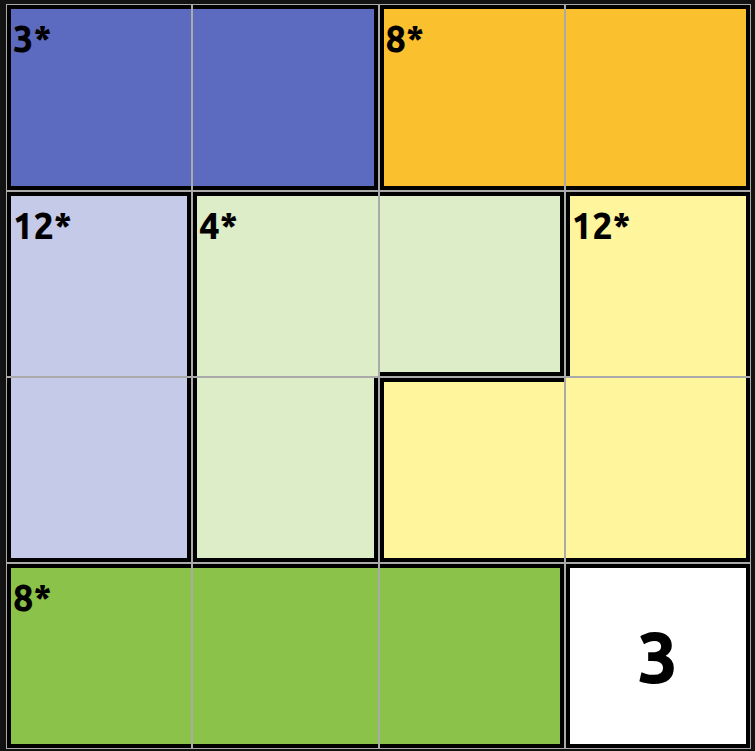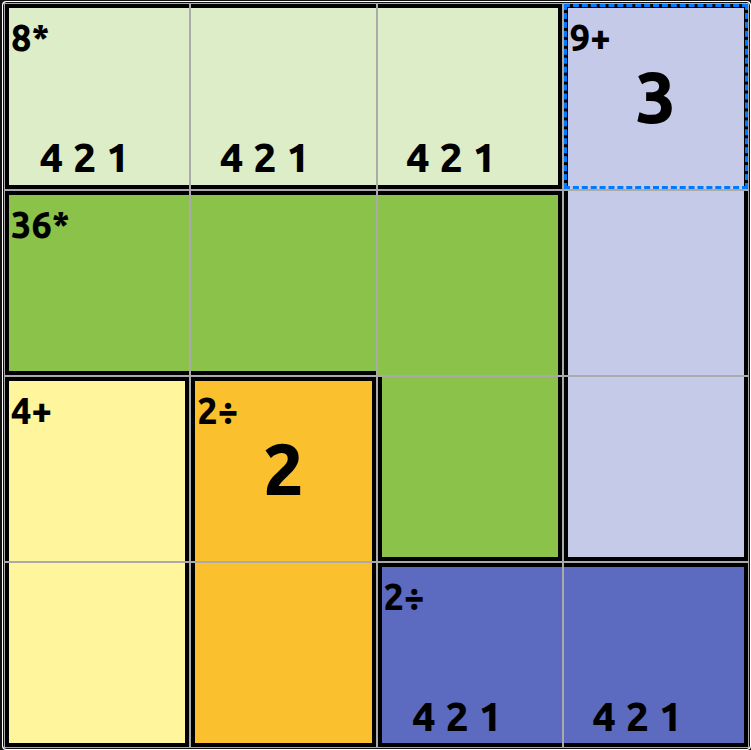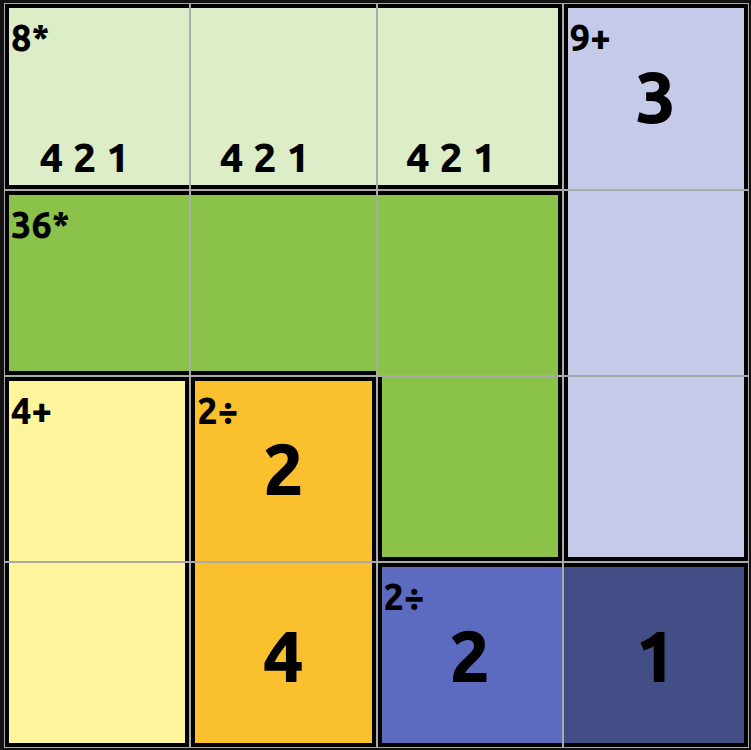How to Play Calcudoku
Calcudoku, also known as KenKen, is a sudoku-like game but with math. The goal is to fill in the grid with numbers so that rows and columns have no repeats while also satisfying the puzzle math.
Rules
- The board is divided into cells and cages.
- Each cell gets a numeric value 1, 2, 3... (for a 4×4, numbers 1–4)
- Numbers cannot repeat in any row or column.
- A cage is a collection of adjacent cells that function as a group.
- Each cage has an operation in the format result:operation, such as 3* or 9+.
- The values of the cells in a cage must match the operation. For example, the 3* cage must be 3*1 or 1*3.
- Single-cell cages are called reveals and already show the correct value.

Basic strategy
- Look for cages with the fewest possible combinations. For example, 8* can only be 4 * 2 * 1 (in any order).
- Remember that each row and column must have each of the values exactly once. Since 4,2,1 is used by the 8* cage we know the first cell of the 9+ cage must be a 3.
- Similarly the last cage can only be 4 ÷ 2 or 2 ÷ 1. In either case a 2 is required so we know that the 2 for the other 2÷ cage must go in row 3.

More strategies
- Look for the highest or lowest value operations because they usually have fewer options. For example 9+ can only be 4 + 3 + 2 since all the cells are in a single column. That means the last cell must be a 1.
- That allows us to easily solve both 2÷ cages since one must be 2 ÷ 1 and the other 4 ÷ 2.
- After each move scan the puzzle to see if there are any force values. For example now that we a 2 in columns 2 and 3 we know that the the first cell of the 8* cage must be a 2.

General Tips
- Use the notes feature to record candidate values in cells.
- Consider taking a hint if you get stuck.
- Prefer multiplication/addition cages early; they limit candidates quickly.
- Re-scan after each placement—Calcudoku cascades fast.
See also: Sudoku • Killer Sudoku